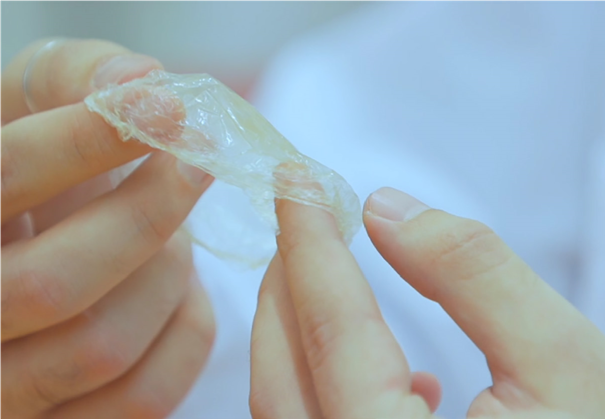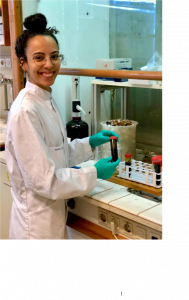
It’s small but bursting with positive energy… the Biobased Energy lab at Avans University of Applied Sciences in Breda. Not surprisingly, this lab is primarily used by the Biobased Energy & Resources lectorate. Researchers and students work in the lab on analyses of organic solids such as biomass and sludge.
What can you find in the lab? The lab is equipped with, among other things, a walk-in fume hood and analysis equipment for nitrogen (Kjeldahl) and- total organic carbon (TOC) in aqueous solutions. The walk-in fume hood is used to perform experiments with our pyrolysis reactor but also for extractions of PHA (bioplastic) from bacteria, among other things.
BIOPLASTIC FROM SEWAGE
Sewage contains valuable substances that can be used as raw materials for biobased products. The Interreg Northwest Europe project WOW! investigates how bio-oil, biochar and PHA (bioplastics) can be obtained from sewage water. At the Biobased Energy & Resources lectorate, the focus is on PHA. Rozalia Persiani, researcher in the Biobased Resources & Energy lectorate works in the lab on the project WOW! ” Bacteria convert so-called ‘volatile fatty acids’ found in sewage into PHA. In a bioreactor, the students provide the ideal conditions for ‘fattening’ the bacteria. As a result, they make more PHA.
You can compare it to the human body, the more food is eaten, the more fat the body produces.” There are also 2 more students working on this project this term. One of these students is Ashour, a fourth year biology and medical laboratory research student. “During my studies, I have been studying molecular biology and microbiology. In the coming time, I will focus on studying PHA accumulation potential in different sewage treatment plants in the Netherlands.” From this it should become clear whether a sewage treatment plant is suitable for the production of PHA and why.
PYROLYSIS TECHNIQUES

Another example of a project that took place in the Biobased Energy Lab is the Pyrolysis Proeftuin Zuid project. Waste streams are still too often simply incinerated but there are better destinations. Pyrolysis is a great possibility. Pyrolysis is a process in which a waste stream (for example waste plastic or cut grass) is converted into oil and biochar without the use of oxygen and at a very high temperature. Qian Zhou, researcher at the lectorate Biobased Resources & Energy: “We carry out pyrolysis with a reactor of our own design with a capacity of 300 grams per hour. From the pyrolysis process we get solid, liquid and gaseous products. We upgrade those products to increase their market value. For example, we even got a patent to improve the quality of pyrolysis oil. In the Pyrolysis Living Lab project, we have improved the production process of briquettes from biochar, among other things, so that we can barbecue more sustainably.” A follow-up project called Pyrochem has already started in which further research is being carried out into improving pyrolysis techniques.
Would you like to know more about the projects in the Biobased Energy Lab, do you have your own ideas for projects or would you like to know more about the facilities? Then please contact Rozalia Persiani.
